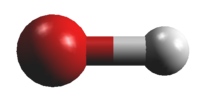|
The entry is based on a combined fit of field free
data of OH+, OD+, and
18OH+.
The N = 2 – 1 transition
frequencies of OD+ were taken
from
(1) P. Verhoeve, J. P. Bekooy, W. L. Meerts,
J. J. ter Meulen, and A. Dymanus,
1986, Chem. Phys. Lett. 125, 286.
Infared transitions of 18OH+
with N" between 0 and 10 were taken
from
(2) M. Gruebele, E. Keim, A. Stein,
and R. J. Saykally,
1988, J. Mol. Spectrosc. 131, 343.
Details of the OH+ fit have been
published in
(3) H. S. P. Müller, F. Schlöder,
J. Stutzki, and G. Winnewisser,
2005, J. Mol. Struct. 742, 215.
The N = 1 – 0 transition
frequencies were taken from
(4) J. P. Bekooy, P. Verhoeve, W. L. Meerts, and A. Dymanus,
1985, J. Chem. Phys. 82, 3868.
The N = 13 – 12 transition was reported in
(5) D.-L. Liu, W.-C. Ho, and T. Oka,
1987, J. Chem. Phys. 87, 2442.
Vibration-rotation transitions up to v =
5 – 4 were also included in the fit.
These were published in
(6) B. D. Rehfuss, M.-F. Jagod, L.-W. Xu, and T. Oka,
1992, J. Mol. Spectrosc. 151, 59.
The N = 1 – 0 transition
may well be the only one observable in space.
It is conceivable that the predictions of its
frequencies are sufficiently accurate for
astronomical purposes. The uncertainties of
the strong J = 2 – 1
component near 515.5 GHz are probably
somewhat small. Predictions at higher quantum
numbers should be viewed with some caution.
The dipole moment was assumed to agree with that
of the main isotopolog, see e017501.cat.
|
